This article was found slanderous by Prof Katrin Amunts and the University of Düsseldorf, because it cites a blog post by Vadim Istomin. The following text was then deleted on 28.08.2019 as per “Order to Delete” from the German law firm Hoecker. However, now that the legally binding time frame to issue a court injunction against the original source (Istomin) has long passed, and Istomin received no court orders or further communications from Hoecker, I understand Amunts does not object to his reporting anymore, in the legal sense. This is why it is also legal for me to impartially cite Istomin, the original article is herewith restored. As a “Gegendarstellung”, readers are strongly advised to read this article, which cites the LEGAL TRUTH as issued by Hoecker Law.
Vadim Istomin is computational neuroscientist, who trained in Moscow when USSR still existed. He left the Soviet state before it collapsed for USA in 1989, where he worked at Mount Sinai School of Medicine and then founded his own consulting agency. Istomin now decided to tell a story, which involves the biggest stars of German neuroscience: the scientific director of the €1 billion-heavy Human Brain Project, Katrin Amunts (see my interview with her here) and Amunts’ former mentor, Karl Zilles, then head of the C. & O. Vogt Institute of Brain Research at the University of Düsseldorf. Amunts also leads a department at the nearby Helmholtz institute FZ Jülich, she also took over the Vogt Institute directorship from Zilles, who then moved to work as “senior professor” in Amunts’ department at FZ Jülich.
Amunts was born in the socialist Eastern Germany as Fiedler, she learned Russian and earned her PhD at the same Moscow psychiatric research hospital where Istomin used to work. In fact, Istomin says he used to be Amunts’ co-supervisor, but had to relinquish all credit when he emigrated to USA. It goes without saying that Amunts could have never have met her senior peer from Düsseldorf, Zilles, before the fall of the Berlin Wall and the German unification, which happened only after she finished her PhD studies in Moscow.
The focus of Istomin’s story are two papers published by Amunts and Zilles in 1995 and 1997, which described computational studies of cortical cyto-architecture on brain sections from adult and child donors. Istomin believes to have found evidence in Amunts’ Russian-language PhD dissertation that the brain samples and the patient descriptions (presented as German DFG-funded research) neatly match those he and Amunts analysed back in the Soviet Union. Even the technology allegedly used by Zilles is a giveaway, says Istomin, because the Vogt Institute in Düsseldorf never had such machinery or software. It is the software he developed in Moscow in the 1980ies, himself.

The Düsseldorf papers
Zilles described Istomin’s article in an email to me from 5 August 2019 as “grotesque and false”, but he so far hasn’t elaborated or followed up as promised. Professor Zilles did mention to be undergoing an operation next day, it is good news he recovered swiftly, as this conference tweet from 11 August 2019 suggests:

Amunts, always in cc, never replied. Another coauthor, Axel Schleicher, formerly at Vogt Institute in Düsseldorf, last seen at FZ Jülich, could not be reached. The University of Düsseldorf and its clinic (to which the Vogt Institute formally belongs) announced to provide a statement eventually, but refused to say when, which means I publish this article without their input and will update should I ever receive it. As a possible conflict-of-interest declaration: the university’s otherwise title-minded press office seems not to recognise my own doctorate degree, even if it was obtained at the same University of Düsseldorf. As another possible COI: the university clinic is no fan of mine after the Antonia Joussen affair.
These are the two papers Istomin took issue with:
Katrin Amunts, Vadim Istomin, Axel Schleicher, Karl Zilles.
Postnatal development of the human primary motor cortex: a quantitative cytoarchitectonic analysis
Anatomy and Embryology, (1995) 192:557-571 (pdf here).
Here the coauthor Istomin claims to have had no knowledge of that paper’s existence until 2012, and complains to have been omitted altogether from the following publication:
Katrin Amunts, Axel Schleicher, Karl Zilles.
Persistence of layer 4 in the primary motor cortex (area 4) of Children which Cerebral Palsy
J. Brain Res. (1997), 38, 2, 247-260 (pdf here)
The criticism starts with some post-publication peer review of the so-called GLI brain analysis technology, and then moves to accuse Zilles and Amunts that, when discussing brain “shrinkage”, they provided an incorrect citation. Instead of having cited “Amunts et al, 1995”, Istomin says the correct reference would have been his own PhD thesis (highlights his):
“the lion share of referenced publication is based on my dissertation entitled “Automatic Morphocorticography of human brain”, and it was developed quite independently, in Moscow, Russia (former USSR), without any help or advise from K. Zilles or A. Schleicher, who were working not only in quite another city – Düsseldorf, but in quite another country as well – Germany.”
Istomin then provides some late 20th century history and reminds of how the Iron Wall used to separate scientists in Europe:
“I started this work in late seventies – early eighties, and gradually transformed it into Ph.D. dissertation. It was defended in 1987, and all major results were published in Russia, between 1982 and 1987, in Moscow, USSR. Another part of the discussed paper is based on the dissertation of Katrin Fiedler (presently – prof. K. Amunts). She was working as a Ph.D. student in my group in the Laboratory of Clinical Neuroanatomy of the Moscow Institute of Psychiatry between 1982 and 1989. Working on her dissertation entitled “Quantitative analysis of the cytoarchitecture of Area 4 of human cerebral cortex in ontogenesis”, she used our technology for image processing, serial sections analysis and quantitative data collection. It was developed by me and my colleague, engineer Michael Shkliarov. At that time Katrin was working extremely hard, and demonstrated her best abilities, especially in tissue collection, processing and using statistical software for data analysis. She successfully defended her Ph.D. in Moscow in 1989. As you can guess, Prof. Zilles and Dr. Schleicher from the University of Düsseldorf could not possibly participate in the development of published technology”
Later on Istomin elaborates how serious the situation was under the Soviet regime: “any “unofficial” cooperation with people from West Germany was practically impossible, not to mention – very dangerous”. It is also worth recalling who used to lead the Moscow Institute of Psychiatry (where Amunts and Istomin did their research at that time): namely the nefarious psychiatrist Andrei Snezhnevsky, responsible for incarceration and abuse of thousands of Soviet dissidents, since Snezhnevsky diagnosed everyone critical of the Soviet regime as a dangerous schizophrenic. No contact to the Vogt Institute of Brain research in western Germany would have been even thinkable under such a boss.
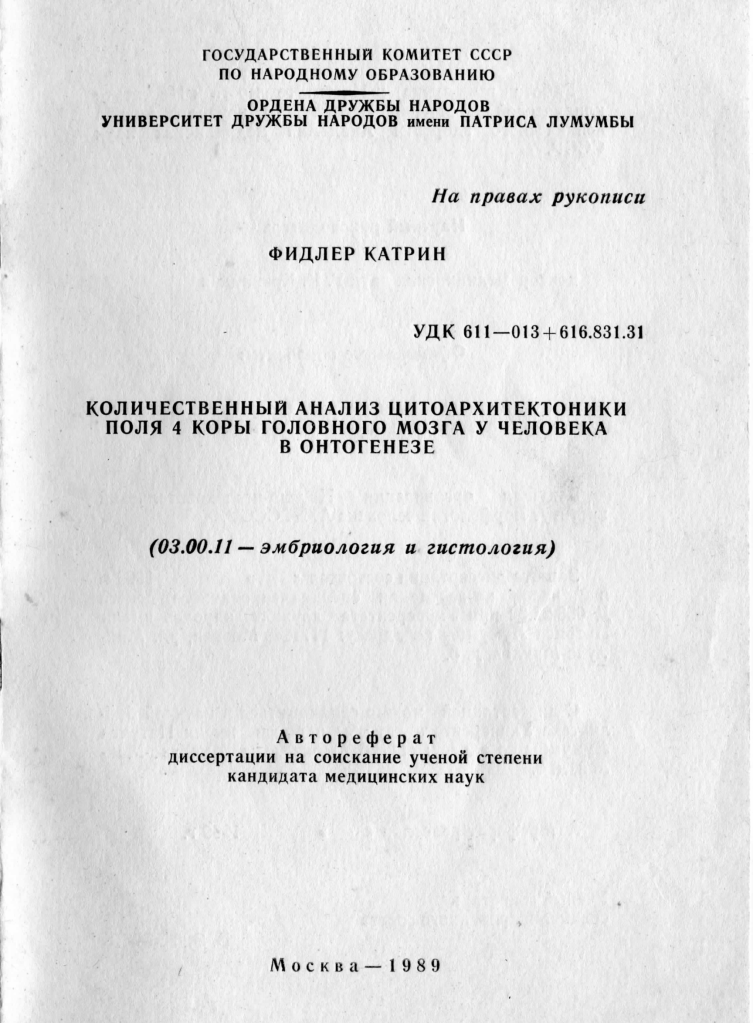
Funded by the DFG?
Both the 1995 and the 1997 Amunts and Zilles papers acknowledge solely the DFG (German Research Council) for funding, namely the grant SFB 194/A6, awarded 1991-2002 to Zilles at Vogt Institute. How come the donors whose brains were analysed allegedly in Düsseldorf match those whose brains were harvested in Moscow in 1980ies? Istomin writes about the Amunts and Zilles studies:
“The paper reports results of quantitative study of brain tissue taken on autopsies of subjects between 0 to 90 years of age, 21 adults (between 27 and 90 years of age) and 33 children (between 0 days to 13 years of age). Postmortem delay (time between death and autopsy) was specified as between 2 and 24 hours. The source of human tissue material is not specified. This omission implies that the tissue belongs to the institution of the corresponding author, namely – C. & O. Vogt Brain Research Institute, Heinrich Heine University Düsseldorf,[…]
In 1989 K. Amunts (Fiedler), defended her dissertation [13], where she reported results of analysis of human brain cortex, also taken from individuals from 0 to 90 years of age, 20 adults and 36 children. Results were grouped by age in four group: group 1 – 0 to 2 years, group 2 – 3 to 6 years, group 3 – 7 to 14 years, and group 4 – 27 to 90 yeas of age. Postmortem delay was reported as between 2 and 6 hours for adult brains, and up to 24 hours for children. The cause of death for adults was cardiac death – “acute cardio-vascular insufficiency” or heart failure.
I know very well how the tissue, used in Katrin’s work was collected, because between 1980 and 1986 I personally participated in collection of practically all adult brains, both “pathological” and of the “normal control”. Approximately between 1980 and 1985 the Institute of Psychiatry participated in tissue collection program, administered by Moscow Institute of Cardiology (headed by prof. [Yevgeniy] Chazov, who also was a Minister of Health).”
This made Istomin question how can the West-German research funder DFG be acknowledged for the work which in his recollection was largely “supported between 1978 and 1989 by the budget of the All Union Center for Mental Health and Institute of Psychiatry of the Academy of Sciences Of USSR”.
Noteworthy, Amunts for some reason does not share much of her academic publishing records pre-Düsseldorf online. As Istomin notes, “Even the most complete list of publications of K. Amunts (list of publications) starts from this 1995’s paper; traces of all prior publications vanished into the thin air”. Admittedly, most people would not be able to read Russian or German anyway, and some of the USSR and GDR journals in which Amunts’ past research was published disappeared completely since. But still, the Moscow-trained Eastern-German academic Dr Katrin Fiedler somehow ceased to exist once she met Professor Zilles in Düsseldorf.
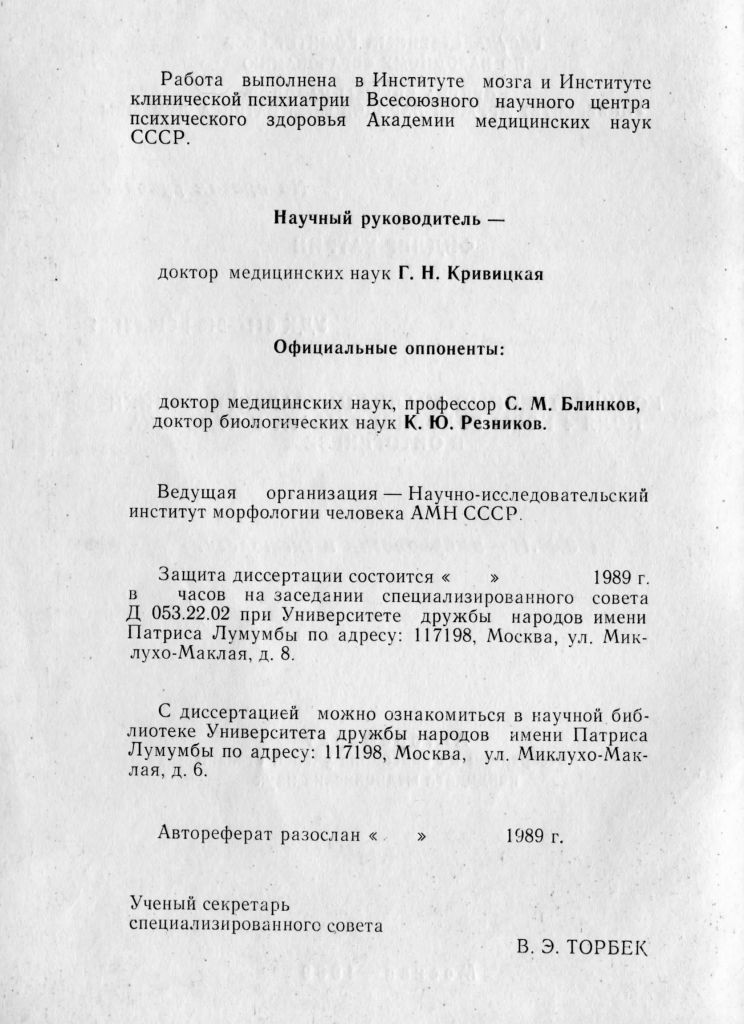
Brains of secret origin?
The official Soviet ethics were very different from those in western Germany, donor consent was basically unheard of, and this is why Istomin rightly says the Moscow brain collection was “unique”. One should consider, what was perfectly legal in the USSR or in the post-Soviet Russia of early 1990ies might have been very much unethical in Western Germany. If there really was some kind of collaboration, Zilles still should have sought an ethics approval form German authorities to use the Soviet material. The Moscow collection, as Istomin recalls, even had brains of children who suffered from mental retardation and other disorders:
“The source of children’s brains was different. The origin was Moscow Morosov’s Children’s Hospital [..]. In this context it is important to consider a small paper [Fiedler, Quantitative analysis of age-related changes of the volume fraction of the cellular elements of the motor area of human brain cortex. In: Plasticity of the Nervous System. Academy of Medical Sciences of USSR, Moscow, 1989 (18):50-52], where similar tissue collection was described. The paper described results of the study of 62 human brains between 0 and 90 years of age, 20 adults and 42 children. Postmortem interval was not specified. […] Based on matching age interval and number of brains, we can conclude that the adult control group is the same, and children group is larger, but essentially the same as in Katrin’s Ph.D.
Matching previously published results with discussed papers made me think that cases published in 1995 paper were collected in Moscow. Therefore, before further analysis, I had to match all published cases with cases listed in K. Fielder’s PhD. dissertation [13], which copy is freely available by request from Central Research Medical Library (ЦНМБ) in Moscow.”

The Amunts et al 1995 paper did not provide any clinical details, but listed the patients’ age at the time of death, and the sequence of listing neatly match that in her PhD thesis, according to Istomin’s analysis. The Russian-language Fiedler dissertation states the causes of death: various diseases, but also “mechanical asphyxiation” or “rupture of internal organs”. Istomin could match even more convincingly with the paediatric cases, because the paper Amunts et al 1997 listed the lethal clinical diagnoses which proved to fit those described in the 1989 Fiedler thesis.
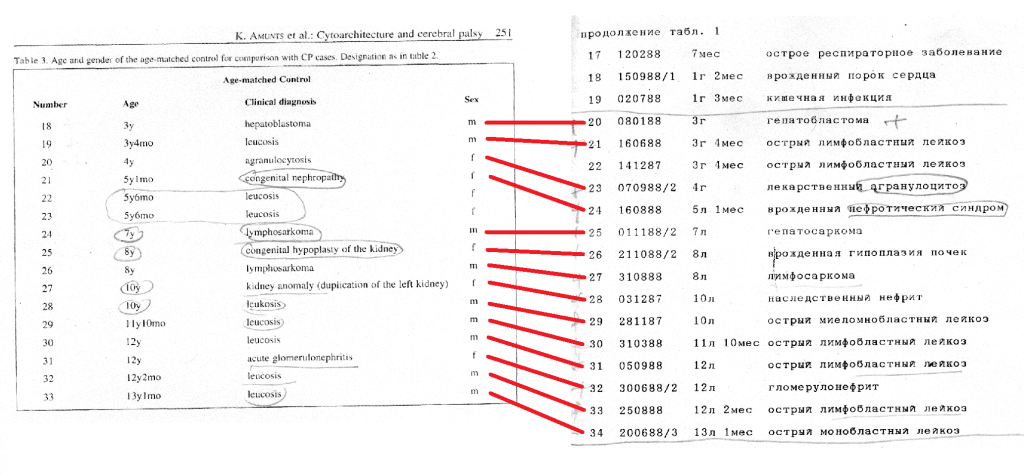
Istomin concludes:
“In the first paper 54 cases were published: 33 children and 20 adults (Table 1). The second paper used some of these cases as “young control” (ages 1 day to 1 year and 3 month), and “age matched control” (ages between 3 and 13 years and 1 month). Out of 17 cases of young control (ages 1 day to 1 year and 3 month), published in both papers, it was possible to match 14 cases to K. Fiedler’s PhD. by age and clinical details. [Three] cases were mismatched by age data, which could be the result of a technical error, or it could be some “new” cases. Out of 16 cases of “age-matched control” all cases could be matched to K. Fiedler’s PhD.
Out of 20 “adult” control cases (ages 27 to 90 years) published in both papers all are matched to Katrin’s Ph.D. case tables. Four additional cases, used in Ph.D., were not used in these papers. Out of 14 Cerebral Palsy cases published in the second paper 11 are matched by age and clinical details. Two cases are “new” (were not included in Ph.D.) One case is a match by age and clinical details, but mismatched by siting ability (possible typo: “could sit up” in Russian text, “Could not sit up” in English text). Based on case code assigned to each case, which is just the date of postmortem study of each patient (see tables from Amunts’s Ph.D., fig.1-4 above), we can see that all normal control brains and Cerebral Palsy brains were collected between 1981 and 1988. The tabulated summary of every matched case is presented in a separate file: summary data tables link.
Overall, 61 out of 67 cases (17+16+20+14), or ~91%, published in two Karl Zilles’s papers in 1995 and 1997 can be matched by age and clinical details to cases collected, processed and quantitatively analysed in Moscow between 1981 and 1988, and included in my Ph.D. and/or in Ph.D. of Katrin Fiedler. This time period corresponds to dates when K. Amunts was working in the Institute of Psychiatry in Moscow, which was between 10 to 4 years before she started working in K. Zilles’s Institute in Düsseldorf in 1992 (or 1993). This can only indicate, that the lion share, if not all tissue material, used in the discussed papers, originated not from Düsseldorf, Germany, but from sources in Moscow, USSR.”
Another give-away was this acknowledgement, present in both Amunts et al 1995 and Amunts et al 1997 papers from Zilles institute:
“The authors thank Professor Herbert Haug, Kristina Rascher and Arend Smit for helpful discussions, and also Vladimir Vinogradov. This work was supported by the Deutsche Forschungsgemeinschaft (SFB 194/A6).”
The somewhat confusing DFG funding we already discussed, but who is this mysterious Mr Vinogradov, otherwise never associated with the University of Düsseldorf? Maybe an owner of some Russian pelmeni restaurant in the Düsseldorf “Altstadt” where Amunts and Zilles used to spend evenings discussing neuroscience? Not really. Istomin explains:
“to the best of my knowledge, Dr. V. Vinogradov is a pathologist from Morosov’s Children’s Hospital in Moscow, who personally performed all postmortem procedureson child subjects, and contributed all children tissue material used in the study of K. Amunts. […] Additionally, all postmortem studies of adult control were performed and collected by me”
The visitor who saw nothing
Let us assume (for argument’s sake) Istomin is right and it were indeed mostly (if not only) brain slices from Moscow used in those two papers from Zilles lab. But surely the impressive analysis could only have been done by the advanced technology developed under Zilles’ lead in the Vogt Institute in Düsseldorf? Istomin seems to see it differently, with reference to Amunts et al 1995, highlights mine:
“Quantitative staining control procedure (first paper, page 558-559) was published for the first time in 1985, and was based on original procedure of mean gradient distribution measurement. This All steps of image processing, including sections “Scanning procedure”, “Segmentation”, “Autofocusing”, “Elimination of artifacts and blood vessels”, “Separation of overlapping cells”, described in the first paper (pages 559-561), were developed in the Laboratory of Clinical Neuroanatomy of the Institute of Psychiatry in Moscow approximately 10 years before the discussed publication became available. For description of our technology an interested reader can look at this article: “The story of MCG: lost opportunity“. “
But what if Zilles is right in denouncing Istomin’s blog post as “grotesque and false”, and his institute did have a suitable software in Düsseldorf? Istomin, then already in New York, claims to have visited the C. & O. Vogt Institute of Brain Research in September of 1994, where he met Zilles. The visitor recollects to have seen “with my own eyes microscopes, computers, image processing system and other equipment” and “had to conclude that with available equipment the reproduction of my technology in Düsseldorf was impossible.” Istomin writes he and his Vogt Institute hosts even travelled together roughly 200 km from Düsseldorf to the Ernst Leitz GmbH headquarters in Wetzlar “to discuss the possibility to purchase or to rent Leitz-TAS Plus, which was necessary to re-implement MCG technology”. The acquisition did not proceed, as Istomin assures, and explains:
“As it was stated in the discussed paper, the hardware used was texture analysis system TAS of Ernst Leitz, Wetzlar. GmbH. However, it is important to notice, that this system was custom-made, or modified for our laboratory in Moscow, and had no analogues anywhere in the world. Consequently, any developed software could be used only with our system. All measurements and image processing results using described methods could be obtained only in our Moscow laboratory and nowhere else. […] Even though A. Schleicher and K. Zilles could not have anything to do with it, published description of the technology with A. Schleicher and K. Zilles as “co-authors” implies their participation, or even supervision of the development of the technology, what was completely not true.”
Data reuse?

There was allegedly also “Re-use of pictures and of scientific data”, according to Istomin. Several figures and datasets in Amunts et al 1995 seem to match those Amunts previously published together with Istomin in 1992, obviously without any involvement of Zilles or Schleicher, since these are not co-authors or mentioned otherwise. The two papers appeared in 1992 in German and in English in the Vision & Voice Magazine, Amunts affiliation was listed as the Fraunhofer Society, East Berlin. Here an example.

In another example Istomin claims the Zilles lab reused a brain scanning technology which he himself developed in Moscow between 1980 and 1986 and named “Automatic Morphocorticography”, or MCG. The Russian researcher concludes:
“reporting of my original findings was abbreviated and vague, and also published without proper attribution and reference. Regrettably, it also failed to explain the major condition of how these findings were achieved”.
Istomin notes that “at least 57% of text material” in Amunts et al 1995 describes results obtained by Amunts and him in the 1980ies in Moscow. He also counts eight figures, namely Figures 2 – 9 reused from Amunts papers originally published in Soviet and GDR journals between 1985 and 1992, and Figures 10 a-c, which Istomin says were “obtained as a direct printout of measurements results, which could be obtained only using hardware and software available in Moscow laboratory”. He sums up:
“Working in our Laboratory, Katrin Amunts used the described technology at least for four years collecting data for her dissertation, which was defended in 1989. Between 1980 and 1992 we published together about 10 papers, some of them are listed below. In 1992 she brought her data to Düsseldorf. It would be reasonable to assume that she wrote the entire manuscript of the discussed paper.”
Understandably, Istomin is clearly disappointed to have been left out. He recalls all these studies he published together with Amunts in all these years, before she moved to Düsseldorf, and cannot fathom what Zilles might have contributed to those results when they reappeared under his Düsseldorf affiliation. The blog post ends with:
“Obviously, existence of papers published together in Moscow in the past does not give any rights to publish the same data again, adding new “co-authors” from Düsseldorf. Moreover, in my opinion it was very improper to mix together our original technology and data with additional statistical analysis of cortical profiles performed 9 years later, and to publish the whole bulk of results in the same paper, without proper explanation of original sources. This paper made an impression that the entire work was done in Düsseldorf under the supervision of K. Zilles. […]
In 1995, Katrin was a young and relatively inexperienced. Probably she could not influence the decision of professor Zilles, even if she wanted. But why did a renowned professor with 148 papers published at 1995, need two more, which his Institute had very little to do with?
What was the need of hiding the fact that the lion share of published work was based on tissue and results collected in Moscow, not in Düsseldorf?
Only Professor Karl Zilles can answer that. He promised to.
As a “Gegendarstellung”, readers are strongly advised to read this article, which cites the LEGAL TRUTH as issued by Hoecker Law.

Donate!
If you are interested to support my work, you can leave here a small tip of $5. Or several of small tips, just increase the amount as you like (2x=€10; 5x=€25). Your generous patronage of my journalism, however small it appears to you, will greatly help me with my legal costs.
€5.00

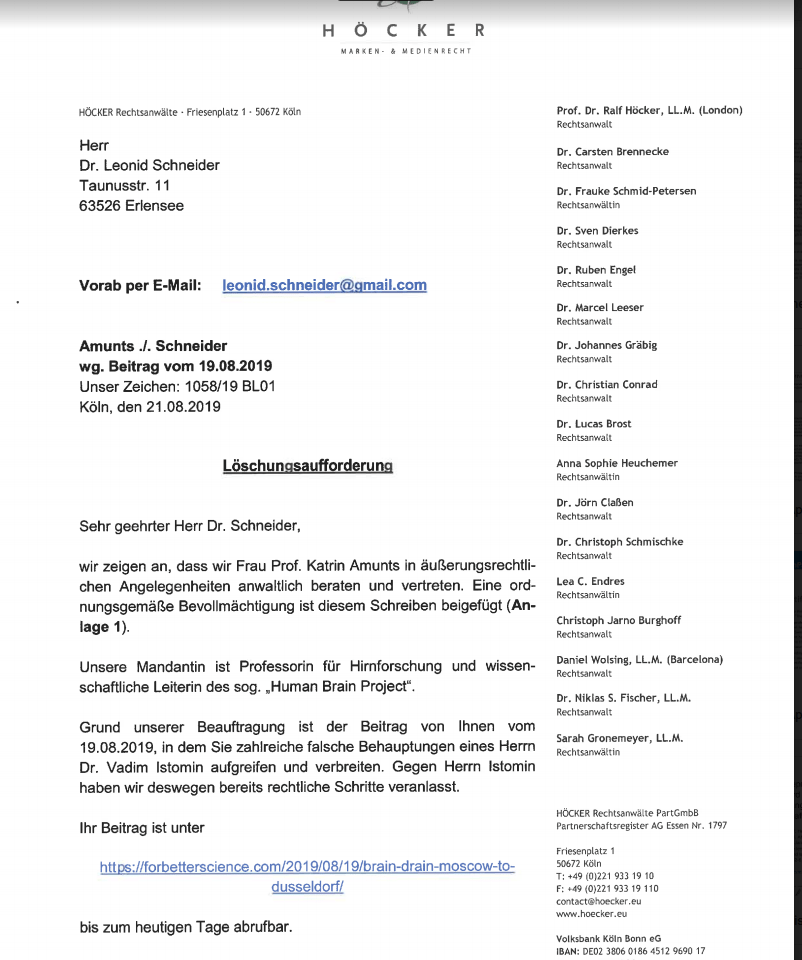
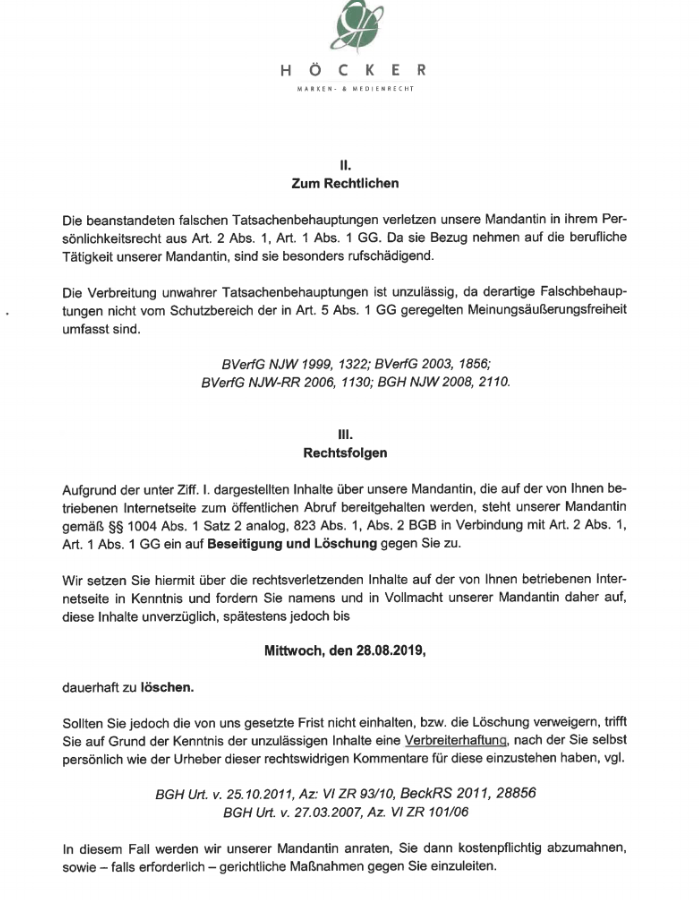

To my knowledge, back to the USSR era, research findings from the Eastern block were forced to be published in Soviet journals, which are not read by anybody, anymore. Since these Soviet-era, print-only papers are practically invisible in our web-based era (not available on internet=does not exist), it is rather easy to reuse figures or data published in those journals. I would not be much surprised if more, similar cases would surface. Once I have met a senior scientist who was born in an Eastern-block country, and later got a PhD in Germany and has become a professor there. This person already had a Soviet-era doctorate when emigrated, and this doctorate was actually the PhD at that time in the Eastern-block. But this person argued in Germany that that doctorate was not a PhD, so was allowed to enter a PhD program in Germany. Playing amnesia about Soviet-time degrees and publications may be legal, but morally is questionable. At least in my opinion.
LikeLike
Pingback: Cervelli trafugati - Ocasapiens - Blog - Repubblica.it
Accusations of fraud are dangerous, and should never be made without cautious verification. This article is relies exclusively on Istomin’s testimony (offered >25 years after the alleged events). Looking at Istomin’s LinkedIn CV presents a bizarre work history, with too many holes and unknowns, which casts serious doubts on his credibility, and requires fact-checking which Schneider has obviously not done. This is not serious journalism.
Moreover, looking at Schneider’s own biographical description, one finds that his presentation of his own scientific accomplishment is deplorable: he lists impressive publications, but you must click multiple times to discover that in one, he is author #10 out of 14 (https://orcid.org/0000-0002-6204-9470), he is #3 out of 8 in another (https://pubs.rsc.org/en/content/articlelanding/2015/TB/C5TB00144G#!divAbstract), and #14/28 in a third (https://pubs.rsc.org/en/content/articlelanding/2015/TB/C5TB00144G#!divAbstract). That’s not cheating, but it isn’t honest either. Academics with integrity just don’t do that. Feh.
So keep in mind that credibility is hard to find here – in both fact-checking (before making accusations!!), and self-presentation. Now let’s see if Schneider is honest enough to publish this reply.
LikeLike
Thank you for your views, friend from the RWTH University of Aachen, located near FZ Jülich. You even used university’s computer (ext-106-078.eduroam.rwth-aachen.de).
Incidentally, Karl Zilles happens to be Senior Professor at RWTH.
http://www.rwth-aachen.de/cms/root/Die-RWTH/Aktuell/Pressemitteilungen/Juni/~gcxq/Doppelte-Auszeichnung-fuer-Prof-Dr-Dr-/?lidx=1
LikeLike
One thing that every good lawyer learns at law school is to change the subject when s/he has a lousy case to defend. You are right: I am connected to an RWTH computer. However, this is not relevant to the current discussion. What matters is the complete absence of fact-checking in your blog. You verified no claim made by the accuser, and you misrepresent your own scientific accomplishments (as I said, you’re not cheating, but you tweak your CV in a manner no honest scientist would). And let me say: your insinuation that Karl Zilles is behind my reply is laughable. Get serious, man, publishing this kind of trash is not a way to make a buck, not even in Germany.
LikeLike
And yet you are scared to reveal your identity. Nice of you to mention lawyers, you pathetic old bully. Let’s see how it plays out for you all.
LikeLike
My work history has nothing to do with my credibility. After immigration to the USA in 1990 I had to provide for my family first, and think ab out career second. So, I took any job I could take, including positions of software developer in Thomson Financial and some other companies. Since such positions were unrelated to Neuroscience or image processing I did not include them to my profile, thus – some gaps in time. If you are hinting that I spent this time in jail – you are wrong.
All events described in my post are true. The work published in two [papers I discuss was done in Moscow. K. Zilles and A. Schleicher added very little to it, As I see it, they contributed to some correlation analysis. Making them co-authors of these papers was unfair. Also, the position of K.Zilles’s name in the list of authors implies that he was the leader of our group, what is not true. During our work in Moscow I never contacted prof. Zilles regarding anything: it was physically impossible. In 1970s -1980s we were behind the “Iron wall”, remember?
LikeLike
I know a few emigre scientists (one has her first degree from Moscow State University). An erratic, patchy CV is a normal part of the emigre experience.
LikeLike
Additionally, I never accused anybody of fraud. I just said in my post that the lion share of scientific work published in discussed publications was done in Moscow, in the Institute of Clinical Psychiatry. This fact was not mentioned in published paper, what was unfair.
LikeLike
“One thing that every good lawyer learns at law school is to change the subject”
That is why you change subject to discussion of Istomin and Leonid research record? That is trivial trick which is ALWAYS used when research misconduct is discussed. To change subject from misconduct to personalities of whisleblowers.
LikeLike
Pingback: Who owns the brains in Moscow, Amunts lawyer’s version – For Better Science
@grey your going down.
LikeLike
Interestingly enough prof Zilles did not send any comments about my article, did not respond to my questions, and did not respond to Mr. Schneider’s questions. It seems, no answer is a good answer.
LikeLike
Pingback: Graphene Flagship deploys Stripy Stellacci to fight the Coronavirus – For Better Science